Seniors (65+) currently make up about 17% of the population in the United States.
Due largely to the baby boomer generation, this percentage is not slowing down either, with a projected 22% of the U.S. population becoming seniors by 2050.
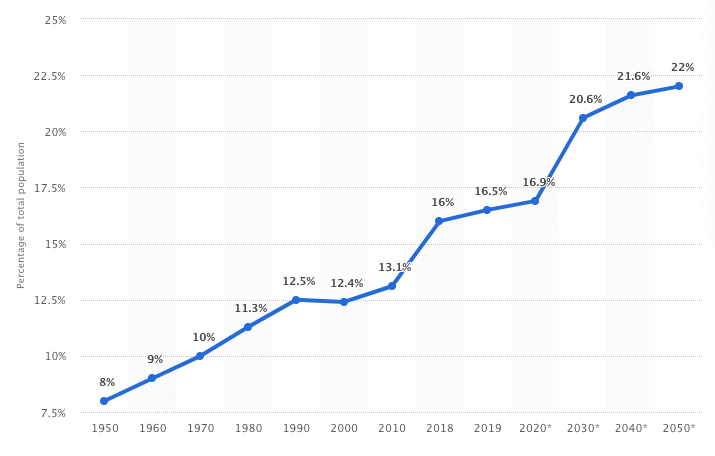
With this growth comes a heightened need, specifically for greater attention on matters important to this age group – from retirement to healthcare.
When it comes to senior care, artificial intelligence (AI) has been developed over the years as a means to mitigate the cost of caring for our aging elders.
AI is the theory and development of computer systems used for its ability to perform tasks that are associated with our minds, such as problem-solving.
In healthcare, AI is similarly defined and is used to mimic human analysis, the understanding of healthcare data, speed up clinical workflow, and pinpoint health problems efficiently.
All these benefits have major effects on the industry.
The average median cost of in-home care in the U.S. currently stands at around $4,500 a month. By 2050, this cost is expected to rise to an average of around $11,000 a month.

With these rising healthcare costs, there is increased pressure on governments, manufacturers, and consumers to determine ways to mitigate medical expenditures.
AI and technological advancements can help to not only deliver better healthcare to seniors but also reduce the average cost of care. Here are some solutions that AI is having on the healthcare market.
Home Assistants
According to Pew Research Center, 37% of seniors in the U.S. live alone. Not only does this cause loneliness, but the risk of emergency is higher without anyone around to monitor a senior in need of care.
Virtual home assistants were created for people requiring daily assistance and monitoring, as well as for companionship.
An example is ElliQ, a robot designed by Intuition Robotics as a daily sidekick for those in need.
Without requiring much tech-savviness to set up, ElliQ helps seniors to continue their independent lives while staying immersed in the world around them. The robot does this by interacting with seniors to keep them mentally active through videos, games, news, trivia, and more.
It also allows seniors to stay connected with their family and friends through video calling, while also reminding them to take things like prescriptions or to drink water.
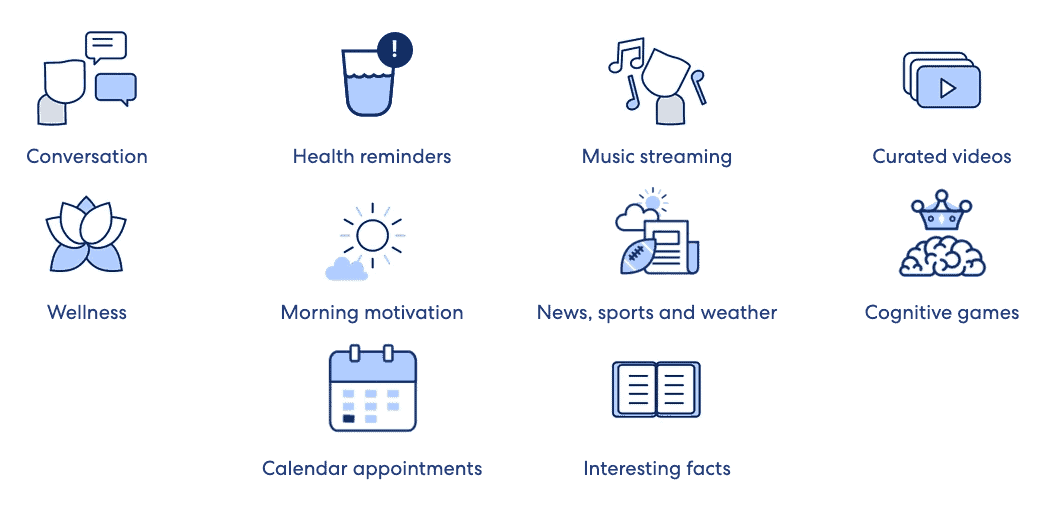
Another example is the Mabu robot from Catalia Health. Mabu is a bit different from ElliQ in that it allows users to seek advice or to record health-related issues from apps, through text messaging, or other interfaces while on-the-go. This option is also user-friendly for those who may not be the most tech-savvy.
Mabu uses AI to deliver an individually tailored conversation to patients because they understand that every patient’s needs are unique to the user.

Both of these robots exist to allow seniors to continue living independently, without the need to constantly be connected with caregivers. This autonomy keeps medical costs relatively low compared to if the patient had in-home care or care at a nursing home.
Portable Devices and Wearables
Seniors are more susceptible to sudden emergency situations like falling, heart attacks, and strokes. Portable devices and wearable technology are a great way to monitor activity and predict serious ailments before they happen.
Apple Watches are a perfect example of wearables that allow seniors to live happier, healthier lives by monitoring vital signs like heart rate, blood glucose, and vitamin levels.
Users find them beneficial in improving their physical and mental health for various reasons, including increasing their motivation for healthier living.
Not only this but since the release of Apple’s Series 4 Watch, a fall detection feature is included that notifies caregivers if a senior has fallen. This feature gives seniors an extra layer of protection against emergencies and also saves lives.

CarePredict’s Tempo Series 3 wearable can predict serious risks like falling, malnutrition, depression, and UTIs, which enables early attention to an emergency before any situation escalates.
It also monitors users’ daily activity so that caregivers can rest assured that their patient is safe with whatever they’re doing and wherever they are.
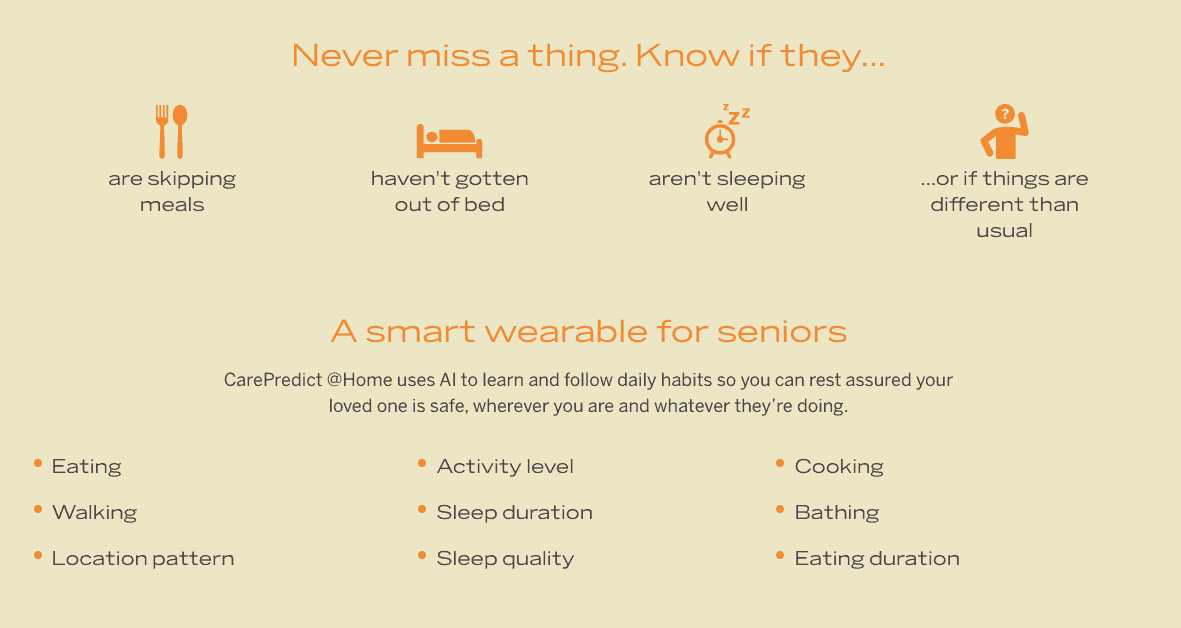
Both Apple Watches and CarePredict are essentially all-in-one caregiver equivalents that seniors can use at all times. They mitigate risk, allow for life autonomy, and keep healthcare costs low.
Smart Home Hubs and Monitoring Systems
Caregivers can’t always be with their patients – this is why smart home hubs and monitoring systems were developed.
These solutions are similar to wearable technology, except they are installed in the homes of seniors to ensure safety and wellness through remote monitoring.
Alarm is a smart home hub that uses sensors to monitor and alert caregivers of unusual activity or subtle changes in routine. It also includes safety features in homes such as automatically turning on lights, changing the thermostat to comfortable levels, and locking doors.
The ability to monitor seniors through security cameras and sensors reduces concern for caregivers so that both seniors and caregivers can live freer, safer lives.
Smart Implants
To put it simply, smart implants are sensors that are embedded into the body so that seniors can take care of their health and better manage their health conditions. These implants give feedback to caregivers faster than any other option, ensuring that medical care is given immediately whenever it’s required.
Glysens is an implantable glucose sensor that is used for seniors with diabetes. Implanting this sensor gives users real-time, accurate glucose data so that common debilitating diseases associated with diabetes like heart disease, kidney disease, and stroke are avoided.
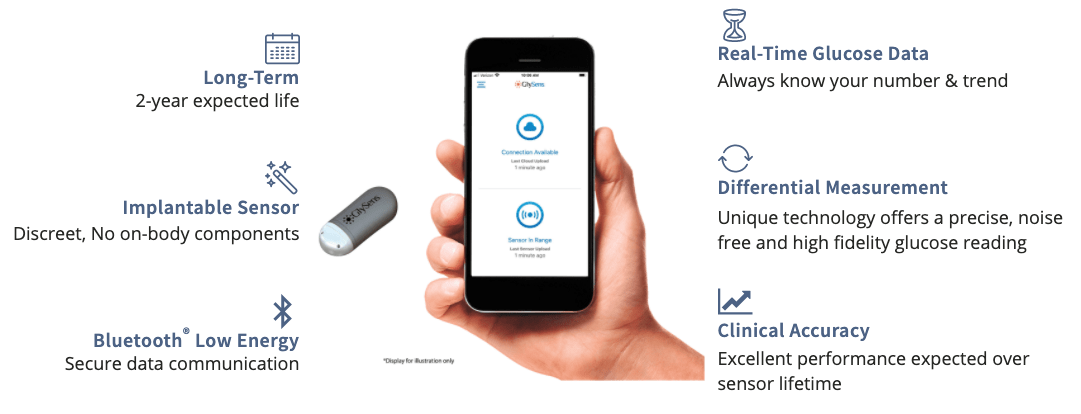
Other implants were created so that surgeons can monitor and diagnose physical inflictions like arthroplasty, fractures, and displacements of joints, ligaments, tendons, and bones.
This solution is used for postoperative care and to help with the rehabilitation of most physical injuries.
Another example by Verasense, Orthosensor is an implant in the knee that allows surgeons to track real-time data during total knee arthroplasty.
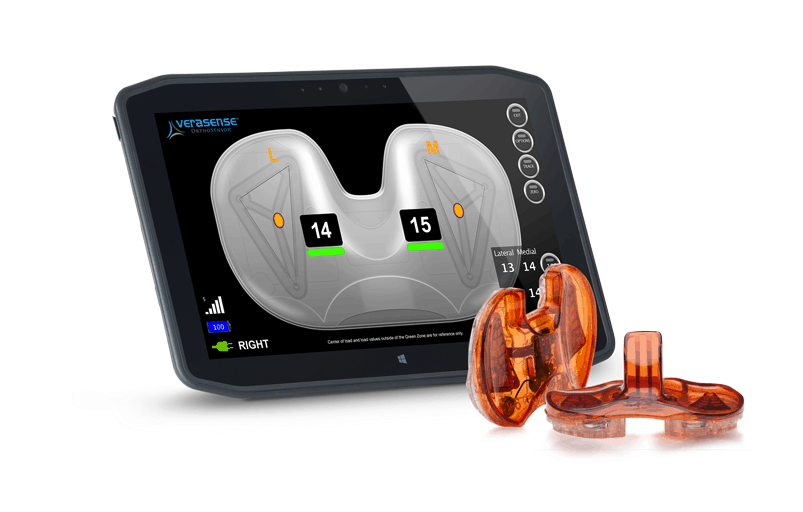
It delivers this data wirelessly to surgeons so that they can make informed decisions regarding the positioning of the implant to improve knee function and stability.
These implants, and more, have diagnostic and therapeutic benefits, allowing the potential for massive cost savings to the healthcare system.
Wrapping Up
The future of healthcare technology is bright, and AI technology is helping to revolutionize how healthcare is being delivered across the globe.
Its main purposes are to improve the lives of users by giving them the care they need, and by allowing physicians and caregivers the ability to deliver better service to seniors in need. Its other massive benefit is that it saves expensive costs associated with medical care and since these costs are ever-increasing, this solution is ideal.
As life expectancy is predicted to continue rising, so too are expenditures on healthcare. This rising pressure on healthcare systems, taxpayers, and manufacturers call for solutions that AI is providing.
Interested to follow more trends in healthtech? Make sure to subscribe to our blog to receive notifications when interesting breakthroughs are made in the industry.



